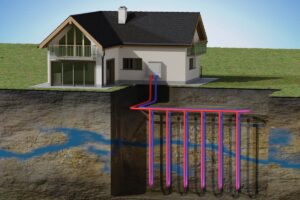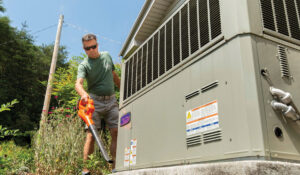I write this while deep in the throes of a remodel that, like many remodels, has lasted much longer than planned.
Remodeling is a great opportunity to take care of energy efficiency improvements by adding them to your scope of work. If your home is already under construction, take the extra step to make it more efficient.
Planning for efficiency is the first step. Look at the scope of your remodeling project to see what energy efficiency upgrades you can add. There may be cost savings and convenience in tackling both at once.
Here are a few examples of energy efficiency upgrades for common remodeling projects.
Kitchen
If your kitchen remodel includes new appliances, buy ENERGY STAR-rated models. ENERGY STAR refrigerators are about 9 percent more efficient than standard models, and ENERGY STAR dishwashers save energy and water.
For kitchen faucets, there are options available with multiple flow-rate settings. Save water by using a lower flow rate on your faucet when washing dishes, vegetables or your hands, but you can change the setting to quickly fill a pot for cooking.
Bathroom
In your bathroom remodel, include a high-performance showerhead. Look for the WaterSense logo for showerheads, faucets and toilets, which ensures the product meets performance and water use standards.
Check the fine print on your existing equipment to see how much you can save. The gallons per minute (GPM) is usually printed on showerheads and faucet aerators and the gallons per flush (GPF) is usually printed on toilets.
High-performance showerheads and faucet aerators conserve water and save energy used to heat water. Using less water can lower your water bill or increase your septic system’s lifespan.
New siding or exterior paint
The best time to make sure your wall insulation is adequate—or to see if you have wall insulation at all—is when you replace your siding or paint the exterior of your home. Wall insulation saves on energy costs, makes your home more comfortable and reduces outside noise.
Batt insulation, spray foam or foam board are good options if you are removing the siding. If painting, you can have a contractor blow insulation into the wall cavities through holes cut into the siding or from inside the house. The holes are then plugged and prepped for paint.
Attic insulation
Often, remodeling requires work in the attic for new lighting or venting bath or kitchen fans. During any project that takes you into the attic, check insulation levels. Work in the attic can negatively impact attic insulation by crushing it or removing it to access work areas.
If more insulation is needed, air seal and check ventilation. Also, make sure all bath and kitchen fans vent to the exterior of the house. Insulation may not be as pretty as new countertops, but it can help reduce your energy costs and make your home more comfortable.
A little planning during a remodel can go a long way toward improving your home’s energy efficiency. Remember: it’s more difficult and more expensive to go back and tackle energy efficiency projects after your space is finished.
When shopping for new appliances, check for the ENERGYSTAR logo on the Energy Guide. ENERGYSTAR-rated dishwashers save both electricity and water. Photo courtesy of Mark Gilliland.










